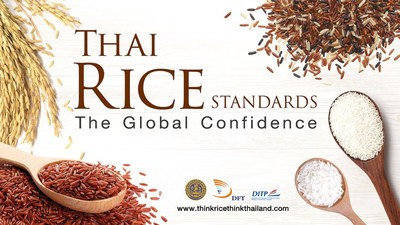Thai Rice Standards Create the Global Confidence in Quality of the National Crop
The aforementioned Thai rice standards apply not only to the country's rice exports but also to domestic rice trading and other stipulated matters. These criteria facilitate trade negotiations: There is no need for buyers and sellers to extensively detail specifications, including rice variety and grade, in their agreement; they simply have to refer the existing guidelines for the particular kind of rice they would like to trade.
To determine whether the quality of rice traded conform with trade agreements or established standards, a randomly selected sample of rice must be analysed. If the sample passes the inspection, the whole batch of rice is deemed in compliance with the accepted standards; however, if the sample fails, the entire batch is deemed unfit. This sampling method is an international practice across the globe. Substandard rice can never be exported because it fails to comply with the provisions of an agreement made with overseas buyers. At home, rice that deviates slightly from the standard will still be sold, albeit at a lower priced based on a set of predetermined criteria. Nevertheless, if the sample is found to diverge too far from the requirements, the whole batch will be returned to its point of origin.
Thai Rice Standards that had been in use since 1957 never prescribed any sampling and inspection instructions, except for the Thai Hom Mali Rice Standards, which stipulated such guidelines in 1997. Therefore, sampling and quality inspection of Thai rice for export have adhered to customary practices from overseas, as well as local practices. For example, samples are taken randomly from at least 2–3% of the total number of sacks in one batch. This sample size is comparable to requirements of the ISO and the IRRI, which mandate that the number of sampled sacks be the square root of the total number of sacks in a batch.
Based on the information above, good quality rice refers to rice that buyers at home and overseas are willing to accept, as well as rice that meets quality requirements. Determining the quality of rice relies not at all on an individual's personal perception but the results of a scientific analysis of randomised samples collected by a neutral party. The samples must be completely random instead of deliberately selected.

The establishment of these Thai rice standards augments the potential of Thai rice exports. It allows buyers to have more options for buying and importing Thai rice, not only the unique strain of Thai fragrant rice known as Thai Hom Mali rice, but also many other types and varieties to suit the needs of consumers in importing countries. These standards also boost consumer confidence in the quality of Thai rice.
Think Rice, Think Thailand.
Visit us: www.thinkricethinkthailand.com
Photo - https://mma.prnewswire.com/media/930778/Thai_Rice_Standards_Create_Global_Confidence_Quality_National_Crop.jpg





